There’s no doubt Antelope Canyon is one of the most iconic natural landmarks in the Southwest, but at Grand Canyon Adventures, we always get a lot of questions around the confusion of why there are two different Antelope Canyons. Although they are geographically across the road from one another, and to the untrained eye, almost indistinguishable, they are very different in many ways. In this post I’ll go over what they share and how they differ to help you decide which one might be best for you.
To start, it’s important to know that both canyons are protected by Navajo Parks and Recreation, and guided tours are required to enter. While both Upper and Lower Antelope Canyon provide unforgettable experiences, there are differences that might influence which is better suited to your group.
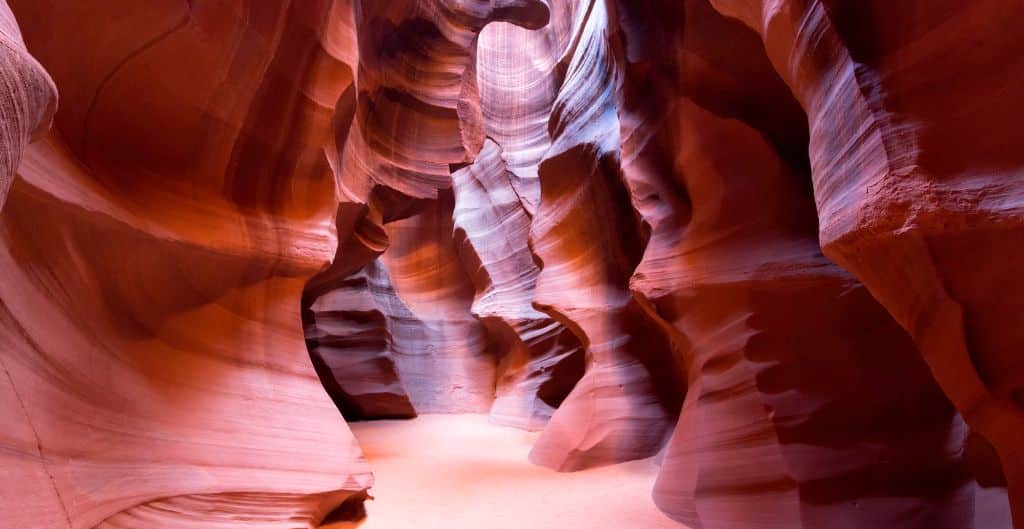
Before diving into the differences, it’s helpful to understand what Upper and Lower Antelope Canyon have in common.
Both canyons were formed by flash floods that carved through Navajo sandstone over thousands of years, creating narrow passageways and intricate patterns on the canyon walls. Navajo Sandstone is essentially just extremely compact sand formations, which also means the canyons are always changing a little bit. To the untrained eye, you would never know the difference.
Sorry folks, the days of just showing up and exploring these canyons solo are long gone, and for good reason. To protect these delicate formations, ALL visitors must join a guided tour—there is no sneaking in for a self-guided walk. These tours are available directly at the canyons, as well as through operators like Grand Canyon Adventures. If you plan on going to the canyon directly, you will want to book MANY months in advance. Another benefit of opting for a guided Antelope Canyon tour with Grand Canyon Adventures is that we’ll provide insights into the geology and history, as well as provide a hassle-free experience by organizing the entire day.
Both canyons are renowned for their unique lighting and colors, which change throughout the day as sunlight makes its way through the narrow openings above, creating the iconic beam of light.
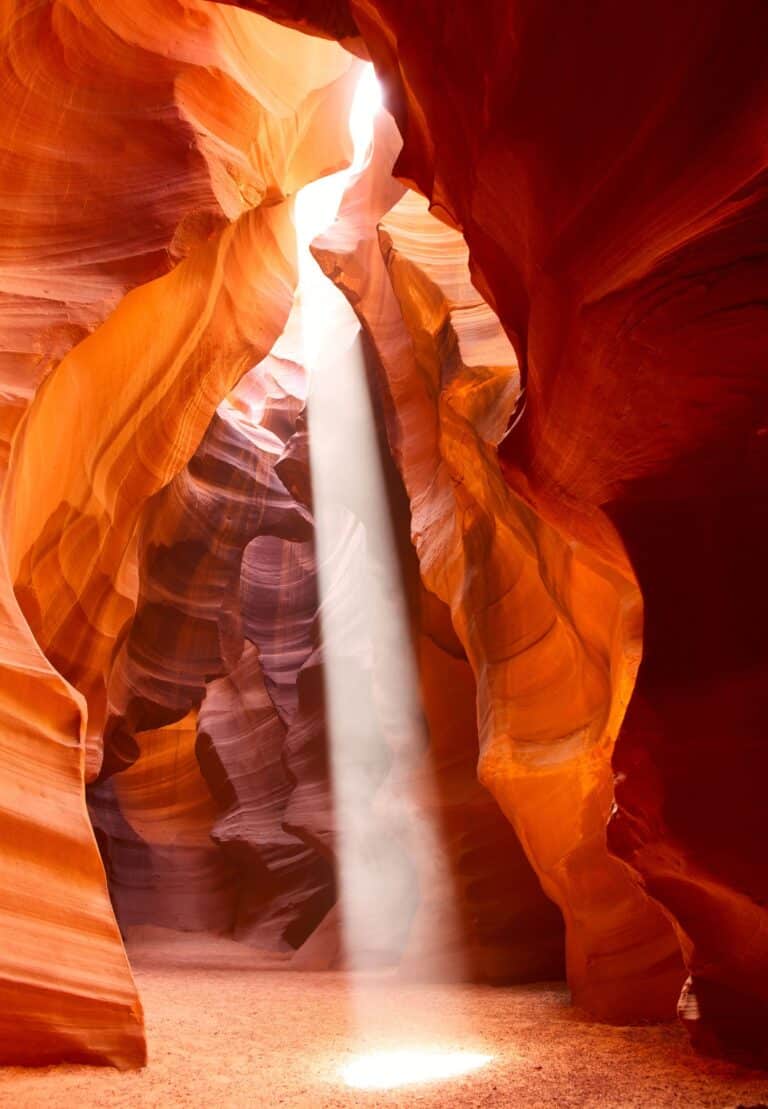
Upper Antelope Canyon is famous for its iconic light beams, which occur when sunlight enters through narrow openings in the canyon roof. These beams are most visible around midday on clear days and have made Upper a favorite destination for photographers worldwide. That being said, the light beams differ greatly month to month.
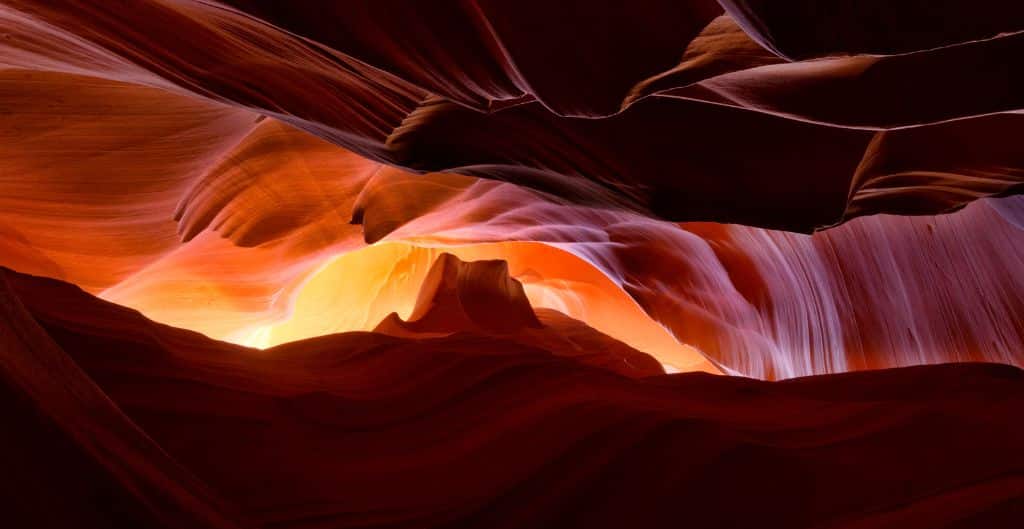
Upper Antelope Canyon has historically been known as the more accessible option, but recent changes have introduced new considerations for visitors. During a temporary closure, tour operators added steps and walkways to create a one-way route through the canyon. Visitors now exit the canyon via stairs and ramps that lead up and around a hill, eliminating return traffic inside. In many ways, it does create for a better experience because you’re not waiting for people coming the opposite direction. However, this change also reduced accessibility for those with mobility issues.
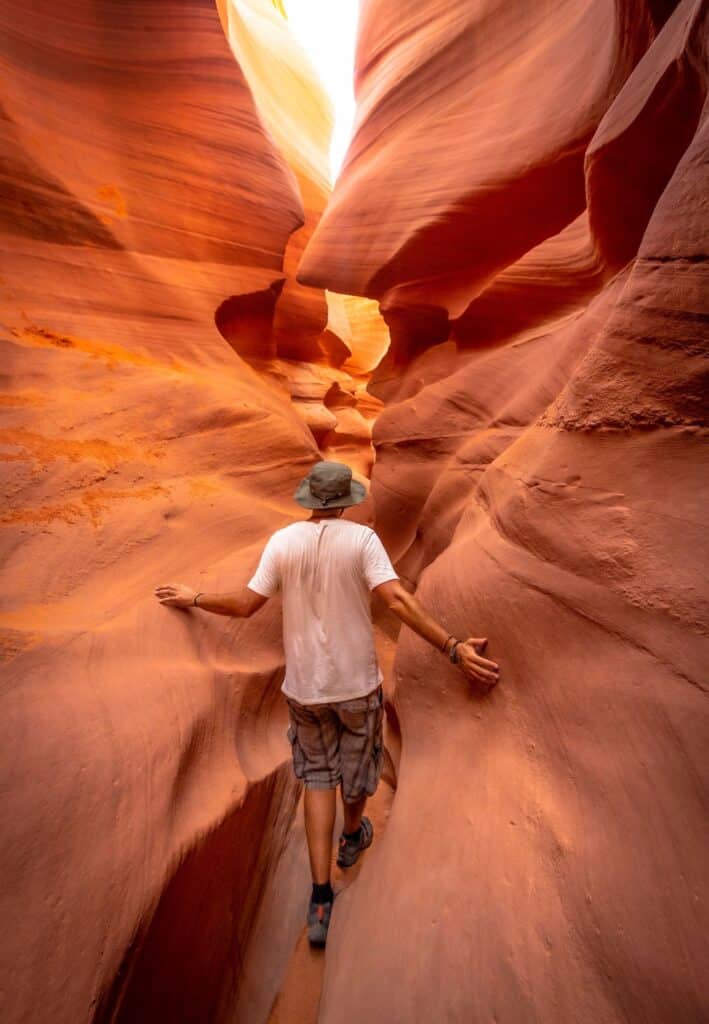
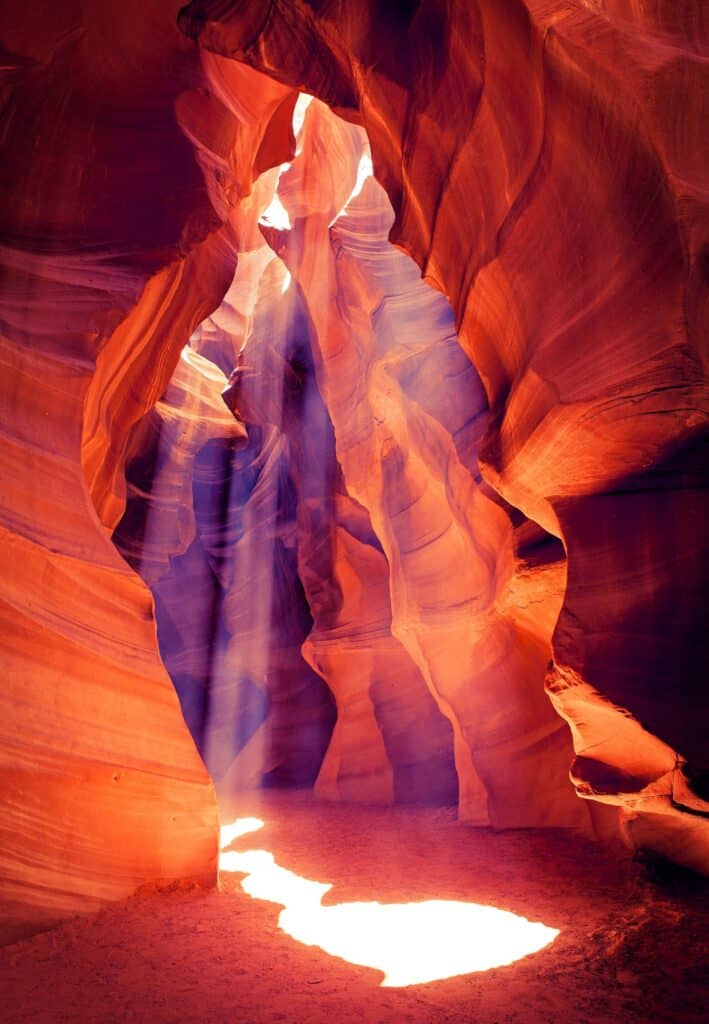
Lower Antelope Canyon offers a calmer experience, with visitors following a one-way path from the entrance to the exit and good separation between the groups. The tour begins with a short descent into the canyon via metal stairs, making it slightly more physically demanding than Upper Antelope Canyon, but still manageable for the majority of guests. The best way to describe the stairs is to think of the stairs you would find on a ship, where it’s almost a mix of a stair and ladder.

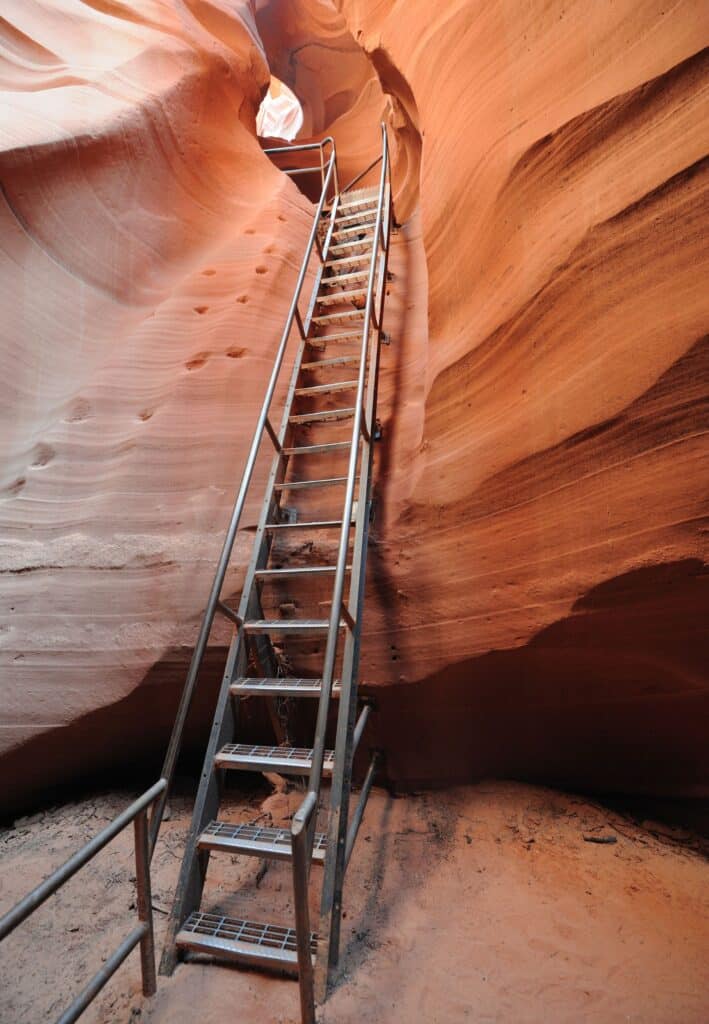
Choosing between Upper and Lower Antelope Canyon depends on your group’s preferences and needs. Here are some considerations:
For those who enjoy a more active and unique experience, Lower Antelope Canyon’s narrower passages add an element of exploration and privacy compared to Upper Antelope Canyon.
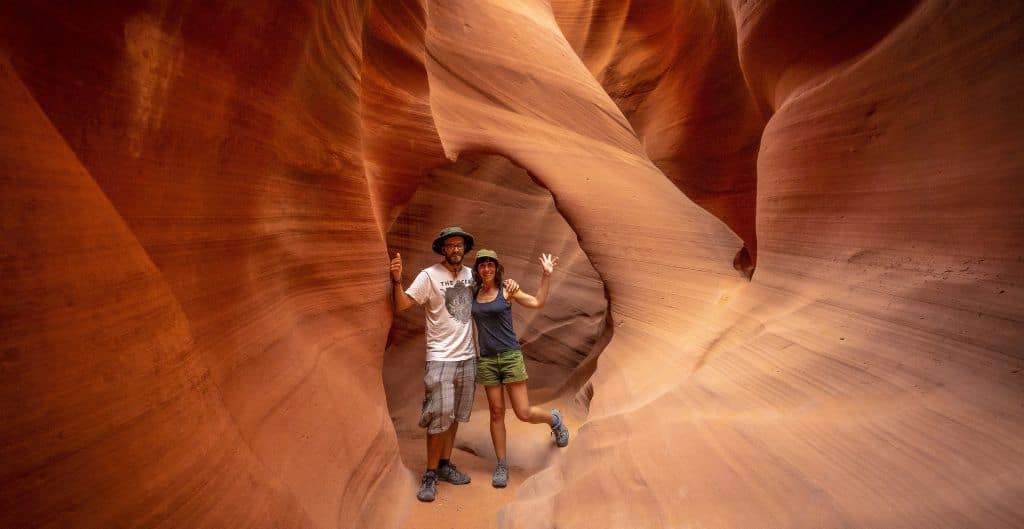
Upper and Lower Antelope Canyon each offer unique experiences that showcase the beauty of Navajo sandstone formations. Upper Antelope Canyon is renowned for its iconic light beams and larger chambers, while Lower Antelope Canyon provides a quieter, more organized tour with fewer crowds. Whichever canyon you choose, your visit to Antelope Canyon is sure to be a highlight of your journey through Northern Arizona.
While Antelope Canyon is an incredible destination, logistics can sometimes make planning a visit stressful. That’s where Grand Canyon Adventures comes in. We specialize in creating stress-free tours that highlight the best of the Southwest. Our all-inclusive tour provides a convenient way to explore Lower Antelope Canyon and nearby Horseshoe Bend. Ready to explore? book your Antelope Canyon tour with Grand Canyon Adventures today and discover the wonder of these remarkable landscapes.
|
Upper Antelope Canyon |
Lower Antelope Canyon |
|
|
Physical Effort |
Moderate: stairs and ramps for exit |
Moderate: ladders for entry |
|
Crowds |
Busier, especially during peak seasons |
Less crowded, more relaxed flow |
|
Accessibility |
Suitable for most visitors |
Requires some physical agility |
|
Duration |
About 1 hour |
About 1 – 1.5 hours |
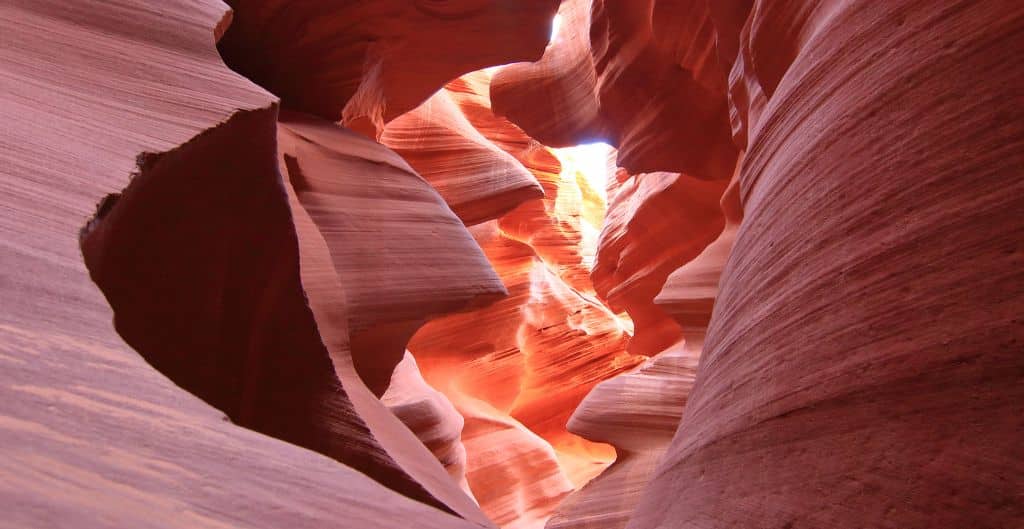
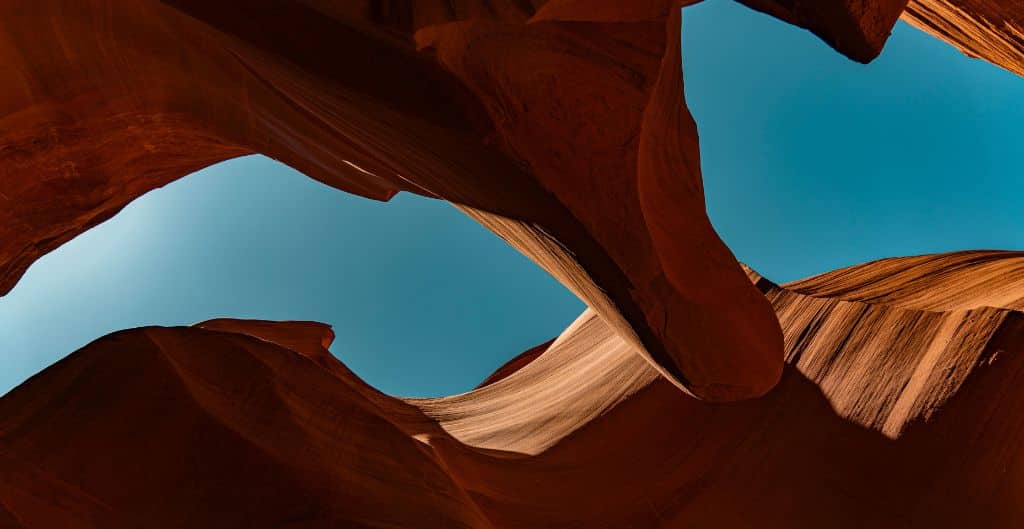
Both canyons are near Page, Arizona, within the Navajo Nation. They are about 15 minutes apart by car.
Yes, both Upper and Lower Antelope Canyon are on Navajo land and can only be visited with a guided tour led by authorized tour operators.
We recommend booking your tour at least 4 weeks in advance, especially during peak seasons (spring and summer).
Both Upper and Lower Antelope Canyon are best to be seen around midday.
Yes, both canyons are kid friendly.
Comfortable, weather-appropriate clothing and sturdy walking shoes. We always recommend dressing in layers as well.
Yes, cameras and smartphones are allowed, but tripods, monopods, and large bags are prohibited.
Tours typically last 1–1.5 hours, including the time to and from the canyon entrance.
Restrooms are not available inside the canyons. Facilities are usually available at the tour company’s meeting location.
No, access to the canyons is restricted to guided tours only.
Tours may be canceled in the event of rain due to the risk of flash floods.
We’ve put together a comprehensive guide for those planning a trip to visit Antelope Canyon. Our guide can help ensure you are fully prepared to enjoy and explore this amazing natural wonder in a manner that is respectful, safe, fun, and enriching. Check it out below!